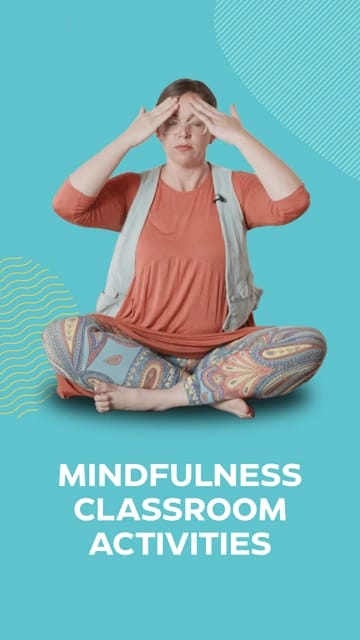5 SEL activities for KS3 students
In this guide
Social Emotional Learning, or SEL, is rapidly becoming an integral part of classroom curricula all over the country. But why is that, and what are the benefits?
Research shows that “SEL enhances young people’s coping skills, resiliency, and emotion identification, which can help reduce symptoms of depression and anxiety in the short term.”
Looking back on my time spent student teaching KS3 students, I really wish I had known about SEL and used it with my students. My classroom was full of strong personalities and off-the-wall emotions, and I was totally unprepared to handle the drama of KS3 life while attempting to teach the Roman Empire. We have a duty to our students not only to teach content but to help them grow into well-adjusted adults.
Educating the mind without educating the heart is no education at all.
Aristotle
What is SEL?
PositiveAction, a leader in SEL curricula, gives us the following definition:
Social-emotional learning (SEL) emphasizes the importance of understanding and managing emotions, building healthy relationships, and developing social awareness. It’s based on the principle that suggests that by educating your students’ hearts, you can help them cultivate emotional intelligence, resilience, and well-being, all of which are vital for success in most areas of life.
positiveaction.net
How is it best used with KS3 students?
CASEL, (the Collaborative for Academic, Social, and Emotional Learning), is the foundation that the U.S. Department of Education uses to guide its implementation of SEL in classrooms.
According to CASEL, SEL has five core competencies:
- Self-Awareness
- Self-Management
- Responsible Decision Making
- Social Awareness
- Relationship Skills

Age group-appropriate activities that align with your curriculum and contribute to the development of these competencies are your best bet for successfully incorporating SEL when teaching KS3. Read on for some suggested activities.

1) Emotions journal
KS3 students are infamous for having a lot of feelings. The combination of puberty kicking off and life’s everyday pressures make for a storm of emotions that can feel impossible to handle. Practising self-awareness is key.
You can help your students navigate their complicated feelings while promoting social-emotional learning by providing a structured means to identify their emotions. Journaling is a simple way to give your students a private space to navigate their feelings about specific topics, or life in general.
This can easily be adapted for all types of learners by allowing your students to use digital journals, write in their native language, or even use emojis to express thoughts and feelings.
2) Practicing mindfulness
Practising mindfulness is a huge part of self management. Self-management consists of both self-control and self-regulation.
Self-regulation in particular is something KS3 students can struggle with – again, consider all of those big feelings. Luckily, there are tons of classroom strategies and activities to help students self-regulate through practising mindfulness.
Here are just a few examples:
- Yoga
- Breathing exercises
- Guided meditation
3) Facilitated discussion & debate
Making decisions can be hard for anyone. As your KS3 students grow and mature, the number of decisions they’ll have to make on a daily basis will exponentially increase – everything from how to style their hair to what they should study for their A-Levels.
Responsible decision-making is important to practise. You can begin teaching these skills to your students by demonstrating how to make a simple pros and cons list, or by providing them with a decision-making worksheet.
Once your students have honed their skills, try putting them to the test by offering up a controversial quote, news article, or hypothetical scenario. Your students will have to consider all possible factors to produce an informed opinion. Here are some interesting debate topics to consider.

4) Appreciating art
Being socially aware is the ability to know what others might be thinking and feeling. A closer look at works of art can provide a lens into different mindsets, cultures, and time periods, fostering a sense of empathy in the engaged individual.
If you can’t physically bring your students to a museum or a gallery, there are tons of resources out there that bring art into your classroom. Check out ClickView’s series on World Art.

Solid relationship skills are crucial for building and maintaining a healthy repertoire with the people you see every day. In the classroom, that’s most often going to be the teacher, any support aids or paras, and other students.
Since there are so many individual relationships among this sampling, you can focus on community building. A great way to do this is to encourage sharing out. Here are some of my favourite techniques that get the ball rolling:
- Show & Tell: Ask students to share an object that is meaningful to them. This can be with a partner, or in front of the class.
- Turn & Talk: The teacher provides a prompt for discussion, and then students turn to discuss with the person sitting next to them
- Popcorn Share: Students share their thoughts without raising their hands. This is an organic way to foster large group discussions. This is a favourite for virtual classrooms.
- Circle Share: Organise desks or chairs in a circle so that students are facing each other and can maintain eye contact throughout the discussion.
- Talking Stick: A prompt is provided, but only the person holding the talking stick can share. Once finished, the talking stick can be passed to the next person.
References & further reading
- Conklin, Tom. Social and Emotional Learning: Essential Lessons for Student Success
- Engaging Lessons, Strategies, and Tips That Help Students Develop Self-Awareness and Manage Social Challenges So They Can Focus on Academics. Scholastic, 2014.
- Durlak, Joseph & Mahoney, Joseph & Boyle, Alaina. (2022). What We Know, and What We Need to Find Out About Universal, School-Based Social and Emotional Learning Programs for Children and Adolescents: A Review of Meta-Analyses and Directions for Future Research. Psychological Bulletin. 148. 765–782. 10.1037/bul0000383.
- Perez, Kathy. The Social-Emotional Learning Toolbox: Practical Strategies to Support All Students, First Edition. Brookes Publishing, 2021.
- Sprenger, Marilee. Social-Emotional Learning and the Brain: Strategies to Help Your Students Thrive. ASCD, 2020.
- When Districts Support and Integrate Social and Emotional Learning (SEL)
- What Does the Research Say? – CASEL
- Respected: Perspectives of Youth on High School & Social and Emotional Learning
- Evidence for Social and Emotional Learning in Schools
- Resources on Social Emotional Learning (SEL) and Student and Educator Mental Health | NEA

Jessica Pastore
briefcase iconMuseum educator
Jessica Pastore is a museum educator living and working in New York City. Her background is in social studies education and world history. She has taught in both classroom and gallery settings for the past ten years.
Other posts
Want more content like this?
Subscribe for blog updates, monthly video releases, trending topics, and exclusive content delivered straight to your inbox.











